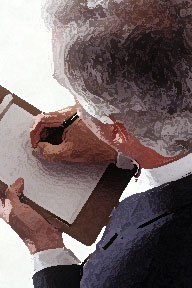
After you establish the date of your business meal, clear your calendar. Rushing to get there on time or rushing at any point in the process can ruin your efforts to establish just the right atmosphere. And, while allowing plenty of your time, pace the meal with respect for the schedules of your guests. If it is a breakfast meeting, confirm the afternoon before and give your guest your home telephone number in case of an emergency. For a lunch or dinner meeting, call to confirm in the morning of that day. If, for any reason, the meeting is cancelled, call the restaurant right away.









